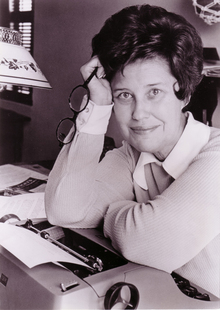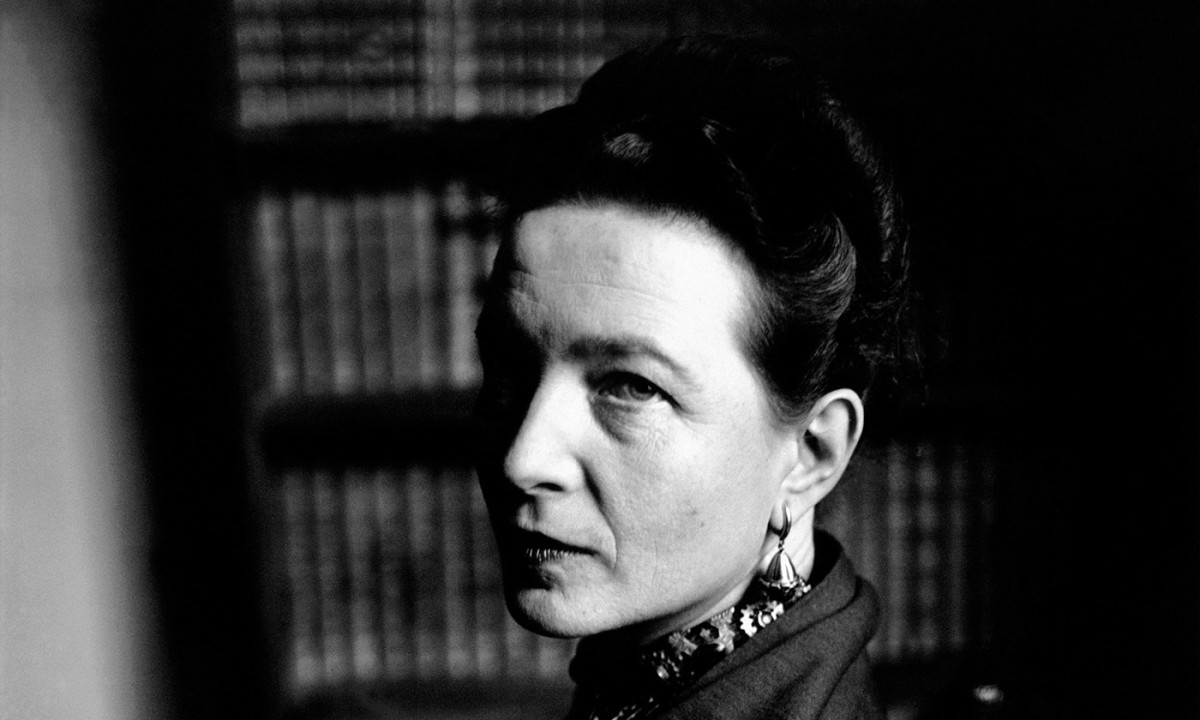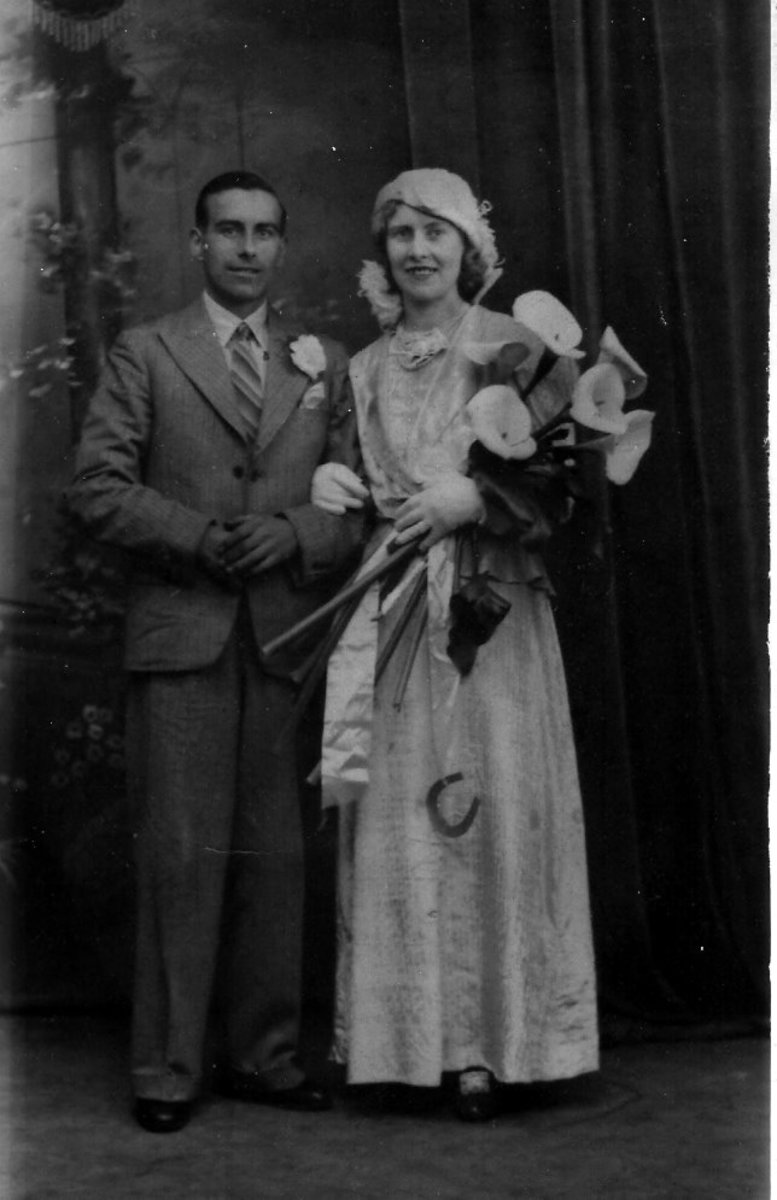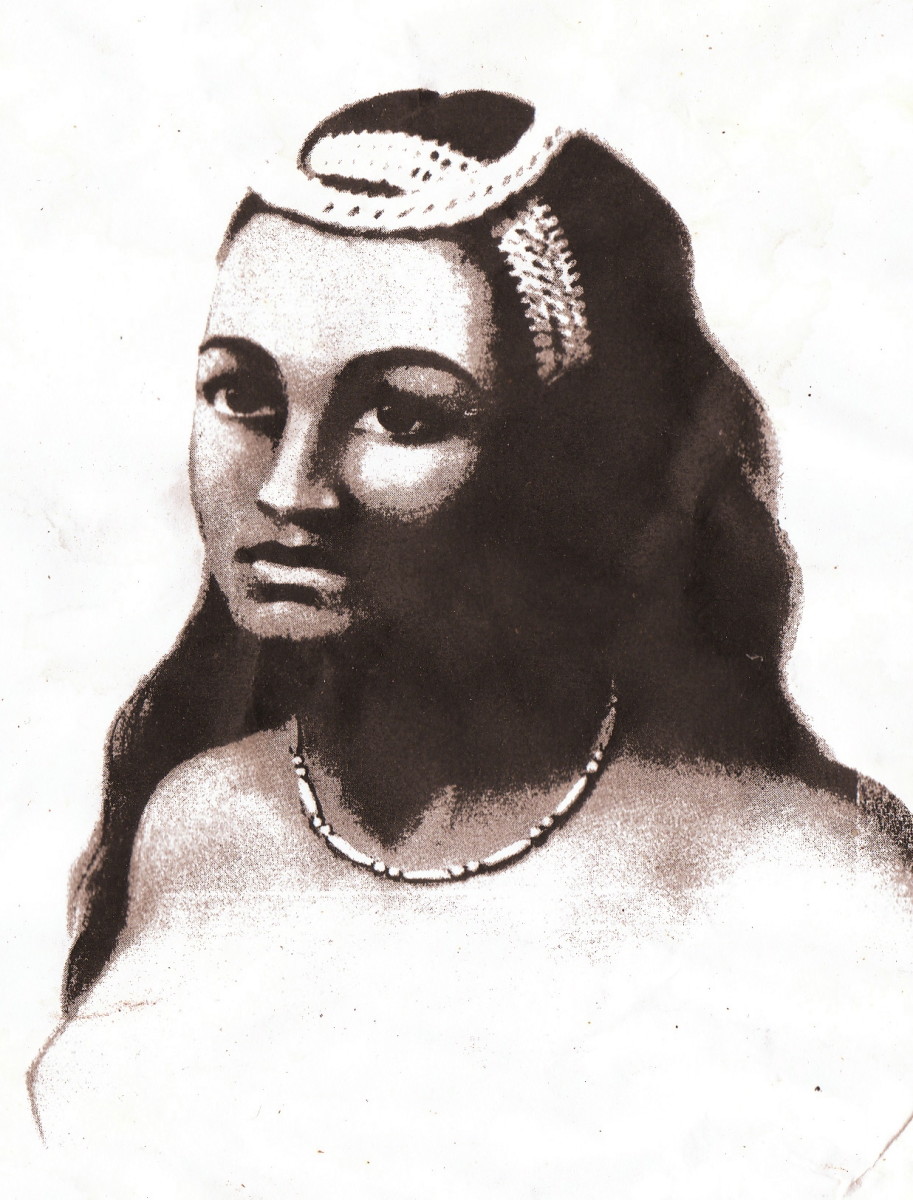Erma Bombeck: Personal Essayist and Advocate for Social Change

Personal essays are nothing new - the earliest ones are attributed to Seneca the Younger, born in 3 B.C. - but they may have begun even earlier. Seneca's essays are not traditionally considered humorous, but he still had the ability to amuse, such as in "Scipio's Villa" when Seneca makes fun of the current state of masculinity by stating that "we have become so dainty that we will tread only on gems" (Seneca 11). Amusement was not the main purpose of his essays, however. They were meant to provoke his audience to think and act. In "Slaves," Seneca tries to teach the value of treating slaves as equals, or at least not as slaves.
Remember, if you please, that the man you call slave sprang from the same seed, enjoys the same daylight, breathes like you, lives like you, dies like you. You can as easily conceive him a free man as he can conceive you a slave (Seneca 13).
The dual purposes of essays did not end. In America in the 1960s, personal essays were still being used to function as both a humorous diversion and a social commentary. Erma Bombeck was just one essayist from the time, but her popularity as well as her message, makes her worth investigating. According to Lauren Berlant, author of "The Female Complaint," Bombeck was "the most powerful, widely read, and self-reflective theorist of bourgeois irony" (250). Bombeck's essays, while humorous, also carried an important social message about the role, expectation, and frustration of women.
One of the first things that must be explored when investigating Bombeck is whether or not her writing falls in the personal essay category. Many consider Bombeck just a humor writer, similar to Dave Barry, but in doing so, they ignore the true depth of her writing. "The essay is notoriously flexible and adaptable in form. It possesses the freedom to move anywhere, in all directions," according to Phillip Lopate, the editor of The Art of the Personal Essay (37). Further, he states, "the hallmark of the personal essay is its intimacy" (Lopate 23). One cannot argue against the intimacy that Bombeck creates with her audience. She discusses every part of her life - from her children, to her husband, to her everyday wishes and desires. There is no part of her life that is taboo in her essays. All of them are laid bare for the audience.
Lopate also discusses the need for the essay writer to create a friendship with the reader - a friendship based on "identification, understanding, testiness, and companionship" (23). Again, Bombeck manages to fulfill this friendship. Berlant includes a mention of a letter that Bombeck received after coming out with her book Motherhood, the Second Oldest Profession. In the letter, a convicted and incarcerated woman who had killed her child wanted to let Bombeck know that "had I known that mothers could laugh at these things, I probably wouldn't be where I am today" (Berlant 251). Admittedly, convicted murderers were not Bombeck's main audience, but her ability to reach any and every mother, even those who chose to terminate their own motherhood, is a testament to her abilities.
Another important characteristic of a personal essayist is the need for a reliable narrator (Lopate 26). The essayist must prove him or herself and know what he or she is talking about. Bombeck was what she wrote about - a frustrated mother living in the suburbs. Whether she's discussing "The Suburban Myth" or "Super Mom," any mother reading knows that this is another trooper, a survivor of both wife- and motherhood. There is no question of "introspective homework" or "reality" - Bombeck's readers know that she can both empathize and sympathize with their plights. In "Loneliness," Bombeck creates a list of symptoms, all leading up to the final realization. We read about a boredom so acute the sufferer goes to the food locker to visit her meat, flushes a Twinkie down the toilet, puts up her hair just to answer the door, calls in to radio shows, and picks a fight with a hamster. After reviewing these and other symptoms, the friend listening to the list pronounces judgment on the condition - it isn't boredom. It's loneliness. Any woman afflicted with similar symptoms will see herself and will agree with the diagnosis.
In opposition to Bombeck's position as a personal essayist, Cynthia Ozick, the editor of The Best American Essays, 1998 believes that "a genuine essay has no educational, polemical, or sociopolitical use" (15), but she then contradicts herself only one page later when quoting from such notably great essayists as William Hazlitt and Ralph Waldo Emerson. Both authors spoke about the value of nature at great length within their essays. Are we as readers supposed to believe that there was no value or true meaning to these essays? Obviously not. And if that is the case, then how can we believe that there is no educational, polemical, or sociopolitical use in an essay? We cannot, especially if we go back and consider Seneca's essays again. With this in mind, Ozick’s definition is suspect and as such Bombeck cannot be ruled out.
Erma Bombeck fits securely in the niche of personal essayists, and if hers include more humor or sociopolitical content than some readers are comfortable with, it should be of no importance in the final determination. Bombeck clearly fits the criteria put forth by Lopate, and even Ozick must admit that personal essayists are allowed a certain lassitude to explore feelings and emotions, and it is impossible to do so and never cross the line into sociopolitical commentary when that is being done, especially when the times and experiences that Bombeck shared were so involved in change.
Bombeck began her writing career in 1952. It began as just product reviews and other small items for the Dayton Journal-Herald for their "women's section." Unfortunately for the newspaper, but fortunately for the rest of America, Bombeck was unable to keep her personal opinions and humor from her column, "Operation Dustrag." The paper was unsure about carrying the articles, but did, and Bombeck's popularity skyrocketed as more women found her. "The house-bound housewives read and realized they were not alone. Although other female writers wrote humorously about being a housewife, Bombeck was the first to focus on those middle-class women living in the new suburbs" (Green and Mason 35). This was especially important and timely as during this time period, "a child-filled home in a suburban tract was advertised as the family dream" (Green and Mason 34). In 1958, the Saturday Review published a column by Ashley Montagu, a popular anthropologist, which stated that "being a good wife, a good mother, in short, a good homemaker is the most important of all occupations in the world…I put it down as an axiom that no woman with a husband and small children can hold a full-time job and be a good homemaker at one and the same time" (Degler 440). Bombeck, and many others, disagreed.
In her book The Feminine Mystique, Betty Friedan discussed the myth versus the reality.
In the fifteen years after World War II, this mystique of feminine fulfillment became the cherished and self-perpetuating core of contemporary American culture. Millions of women lived their lives in the image of those pretty pictures of the American suburban housewife, kissing their husbands goodbye in front of the picture window, depositing their stationwagonsful of children at school, and smiling as they ran the new electric waver over the spotless kitchen floor. They baked their own bread, sewed their own and their children's clothes, kept their new washing machines and dryers running all day… (Friedan 18).
In reality, though, the situation was much different. American women were living the "perfect" lives, but they still felt "a strange stirring, a sense of dissatisfaction" (Friedan 15). While women were doing everything they were told would make them satisfied, they didn't find that satisfaction, and most of them would instead question, "Is this all?" (Friedan 15).
Bombeck was living the life that Monagu suggested for women, the same life that Friedan counseled was filled with uncertainty and dissatisfaction. Bombeck was married, lived in the fantastic new suburbs, and had three children. By all accounts, she should have been wonderfully happy. But she wasn't. Her writing gave her the opportunity to both share those feelings and let other women know they weren't alone. In her essay "The Suburban Myth," Bombeck discusses the domestic rut that women fall into. They aren't living lives of wild abandon and happiness. They are watching soap operas - in some cases addicted to them - and repeating the same five sentences:
1. Close the door.
2. Don't talk with food in your mouth.
3. Check out the clothes hamper.
4. I saw you playing with the dog so go wash your hands.
5. You should have gone before you left home. (Bombeck 73)
over and over again. In short, life in the suburbs was really full of "boredom, frustration, and alienation" (Green and Mason 34).
Bombeck took it further still in "Who Killed Apple Pie?" The first two sentences express the same feelings that took Friedan a book to express:
It's a frightening feeling to wake up one morning and discover that while you were asleep you went out of style. That's what happened to millions of housewives, who one day looked into their mirrors and said, 'I do not feel fulfilled putting toilet seats down all day.' (Bombeck 183).
The essay continues, leading readers into Bombeck's life and into the same experiences most of them have. The frustrations reach a fever pitch, and Bombeck realizes that she can't take it anymore (184). She decides to go to work. The first order of business is to find a babysitter, which brings her to another realization. "It's depressing when you realize no one wants to be paid for what you've been doing for years for nothing" (Bombeck 185). At the time, the realization was against the grain. In fact, the Presidential Commission on Women, founded in 1961, issued a report in 1963 that asserted that a woman's "primary role was that of mother and wife. To strengthen the family, the report recommended special training of young women for marriage and motherhood" (Degler 441). This is, however, not something unique to Bombeck's writing. In fact, according to Lopate, "it is often the case that personal essayists intentionally go against the grain of popular opinion" (30). In this case, Bombeck's beliefs and statement are sooner borne out by the general public and her own readership - a 1973 Redbook poll showed that less than two percent of women felt that "women could [realize] their full potentialities by being a wife and mother only" (Degler 448).
Bombeck's challenging of assumptions didn't stop with purely feminist thoughts, however. She was willing to show equality within her essays. In "Profile of a Martyress" and "Profile of a Martyr," she first explores a women staying home with the children while her husband travels, and then turns her eye to the man traveling. The woman is miserable, having shouldered awesome responsibility. She must go to parent-teacher meetings alone, deal with the death of a house pet, children's injuries, missing mortgage payments, car trouble and accidents, boredom, misbehaving children, dentist appointments, unending errands, and carpooling. Throughout it all, well-meaning but ignorant passer-bys remind her of how lucky she is. Any woman could empathize. But then Bombeck takes it a step further than most would have. She flips the tables. The man, now on his own for a business convention, misses his flight, has his luggage lost, cannot get anything but math courses from the university on his television, cannot find the light switch in his hotel room, which has no form of working temperature control, must share two elevators with 1,500 other conventioneers, must sit through boring and meaningless meetings and dinners, and deals with phones that do not want to call home. Both are presented with humor and feeling and her method of writing proves a point - it isn't just women who are miserable.
Even while the martyr essays put men and women on equal footing, other essays by Bombeck, such as "Second Car Ten-Day War," show that the final decisions in the family were made by the men, even though the women could do a lot to influence the outcomes. When Bombeck decides that she needs a car in order to survive life in the suburbs, she is expecting to get herself "a bright, yellow sports number - a one-seater that puts you three inches off the ground and sounds like a volcano when the motor turns over" (Bombeck 33). Instead, her husband decides that she needs a "four-wheel-drive station wagon with a spare tire on top, space for extra gas cans along the back, and fold-down seats giving [her] room to transport the Cleveland Symphony and all their instruments" (Bombeck 33). It's practical, and she gets it. She isn't happy with it, and in order to convince her husband to switch cars, she must come up with a logical (albeit funny) argument that forces her husband to switch cars with her. But it must be his own idea - she must let him make the decision.
Bombeck didn't believe that she was letting her personal and political beliefs appear in her columns, yet it's clear that they do play a major role in everything that she wrote (Green and Mason 35). While some feminist critics believed that her essays were actually contributing to the stereotype that said that women were only interested in housework and homelife, others see that with some deeper introspection, Bombeck is actually challenging those beliefs (Nilsen 931). Berlant believes that Bombeck's purpose was actually "to reverse the burial of mothers in their ungrateful families and in the fantasies of a culture unwilling to represent to itself its exploitation of women" (251). Berlant even goes so far as to say that, "Bombeck provides potentially explosive material for arguments against the nuclear family, arguments deployed on behalf of what Bombeck would call the most erased women of all - middle class housewives and mothers" (Berlant 252).
These feelings are expressed in "Super Mom," an essay which compares "super moms" with "interim mothers." Super Moms are everything that was expected of a woman. Super Moms cut the grass, bake their own bread, shovel their driveway, grow their own herbs, make their own the children's clothes, alter their husbands' suits, play the organ at church, plan the vacations, pay the bills, participate in committees and carpools, make their own Christmas cards, vote in every election, see the dentist twice a year, melt down old candles, and have a pencil by the telephone (Bombeck 121-122). Interim mothers, on the other hand, are only "biding their time until the children [are] grown" (Bombeck 120). They dye their kitchen linens black to save time, hide candy from the children so they don't have to share, and never give their own names at PTA meetings.
The moral of the essay is that it's unnecessary (and stressful) to be a Super Mom, and by the end of the essay, the newly moved in Super Mom has learned that there is life after children and joined the other Interim Mothers (and is much happier for it). Try as she might to say there is no message in her writing, Bombeck could not deny that in this case, a message comes through.
The messages in her essays, though, are only one of the reasons why Bombeck was successful in her personal essay writing.
Bombeck's essays were successful because she used them to reach her readers, mostly housewives, and taught them "to survive boredom, frustration, and alienation through laughter, exaggeration, truth, parody, and sarcasm" (Green and Mason 34). As every good personal essayist knows (and is good at), communication and connection is key. Bombeck is able to achieve both, as has been shown. Part of the reason for this successful communication is humor. Bombeck's personal essays "give a voice to and represent this exploitation 'humorously'" (Berlant 251).
In her article "In Defense of Humor," Alleen Nilsen argues that "…humor flourishes only when there's a moderate level of tension between groups" (928). For Bombeck, that tension existed in two different groups - first, between the Super Moms and Interim Mothers, and second, between men and women. In Bombeck's Essay "You Thought the Wedding Was Bad," she explored the differences between men and women, and why they had problems communicating. "For example, a woman can walk through the Louvre Museum in Paris and see 5,000 breathtaking paintings on the wall. A man can walk through…and see 5,000 nails in the wall" (Bombeck 162). By playing up these differences, Bombeck was able to use the tension that existed to create humor and bring her audience into the fold. The insider take she was able to provide on the life of the housewife helped the humor further, allowing her to say things that others, particularly men, could not or would not say.
Another possible reason for her success may be something very simple - the form itself. "In 1929, Virigina Woolf concurred that 'women's books should be shorter, more concentrated, than those of men and framed so that they do not need long hours of study and uninterrupted work'" (Gubar 432). Since women, especially housewives, have very little time on their hands during which they can sit down and read long work, having a chance to read a short work, such as a personal essay, may have helped greatly in Bombeck's popularity and appeal. Being able to read something in its entirety in one sitting was very possibly part of the reason that Bombeck prospered in her writing.
Erma Bombeck died on April 22 in 1996 at the age of 69 after undergoing a kidney transport. Now, ten years after her death, fourteen of her collections of personal essays are still in print. They can be found at major bookstores, in used bookstores, and on shelves in many American homes. In her sixty-nine years, she accomplished more than many other "housewives" ever dreamt of. She was named to the list of twenty-five most influential women in America by the World Almanac in 1979, appeared as the grand marshal of the Rose Bowl Parade in 1986, was awarded fifteen honorary doctorates, was the first woman to be named to the America Academy of Humor Columnists, and was a member of the Society of Professional Journalists (Green and Mason 35). Her books have made best-seller lists, and without her, many women would have wondered if they had indeed "lost everything in the post-natal depression."
Erma Bombeck was a talented and important personal essay writer. Her place as a personal essayist should not be questioned, and her essays, while humorous, also carried an important social message about the role, expectation, and frustration of women.
Works Cited
Berlant, Lauren. "The Female Complaint." Social Text. 19/20 (Autumn 1988). 235-259. 18 December 2006. <http://links.jstor.org/sici?sici=0164-2472%28198823%290%3A19%F20%3C237%3ATFC%3E2.0.CO%3B2-F>
Bombeck, Erma.Four of a Kind: If Life is a Bowl of Cherries - What Am I Doing in the Pits? Introduction. New York: McGraw-Hill Book Company, 1991. 159-160.
---. "Hosting a Famine." Four of a Kind: The Grass is Always Greener over the Septic Tank. New York: McGraw-Hill Book Company, 1991. 75-79.
---. "If You Thought the Wedding Was Bad…" Four of a Kind: If Life is a Bowl of Cherries - What Am I Doing in the Pits? New York: McGraw-Hill Book Company, 1991. 161-171.
---. "Loneliness." Four of a Kind: The Grass is Always Greener over the Septic Tank. New York: McGraw-Hill Book Company, 1991. 84-91.
---. "Profile of a Martyr." Four of a Kind: If Life is a Bowl of Cherries - What Am I Doing in the Pits? New York: McGraw-Hill Book Company, 1991. 201-203.
---. "Profile of a Martyress." Four of a Kind: If Life is a Bowl of Cherries - What Am I Doing in the Pits? New York: McGraw-Hill Book Company, 1991. 199-201.
---. "The Second-Car Ten-Day War." Four of a Kind: The Grass is Always Greener over the Septic Tank. New York: McGraw-Hill Book Company, 1991. 32-35.
---. "The Suburban Myth." Four of a Kind: The Grass is Always Greener over the Septic Tank. New York: McGraw-Hill Book Company, 1991. 72-75.
---. "Super Mom!" Four of a Kind: The Grass is Always Greener over the Septic Tank. New York: McGraw-Hill Book Company, 1991. 119-124.
---. "Warning: Families May Be Dangerous to Your Health." Four of a Kind: If Life is a Bowl of Cherries - What Am I Doing in the Pits? New York: McGraw-Hill Book Company, 1991. 210-220.
---. "Who Killed Apple Pie?" Four of a Kind: If Life is a Bowl of Cherries - What Am I Doing in the Pits? New York: McGraw-Hill Book Company, 1991. 183-189.
---. "You Will Come to My Home Party." Four of a Kind: The Grass is Always Greener over the Septic Tank. New York: McGraw-Hill Book Company, 1991. 48-51.
Degler, Carl N. At Odd: Women and the Family in America from the Revolution to the Present. New York: Oxford University Press, 1980.
Friedan, Betty. The Feminine Mystique. Twentieth Anniversary Edition. New York: W.W. Norton & Company, Inc., 1983.
Green, Carol Hurd and Mary Grimley Mason, ed. "Erma Louise Bombeck." American Women Writers from Colonial Times to the Present: A Critical Reference Guide. Vol 5, Supplement. New York: The Continuum Publishing Company, 1994. 34-36.
Gubar, Susan. "The Graying of Professor Erma Bombeck." College English. 61.4 (Mar 1999). 431-447. 18 December 2006. <http://links.jstor.org/sici?sici=0010-0994%28199903%2961%3A4%3C431%3ATGOPEB%E2.0.CO%3B2-P>
Lopate, Phillip. The Art of the Personal Essay: An Anthology from the Classical Era to the Present. Introduction. Selected by Phillip Lopate. New York: Anchor Books, 1995. xxiii-liv.
Nilsen, Alleen Pace. "In Defense of Humor." College English. 56.8 (Dec 1994). 928-933. 18 December 2006 <http://links.jstor.org/sici?sici=0010-0994%28199412%2956%3A8%3C928%3AIDOH%3E2.0.CO%3B2-7>
Ozick, Cynthia. The Best American Essays 1998. Introduction. Edited by Cynthia Ozick and Robert Atwan. Boston: Houghton Mifflin Company, 1998. xv-xxi.
Seneca. "Scipio's Villa." The Art of the Personal Essay: An Anthology from the Classical Era to the Present. Ed. Phillip Lopate. New York: Anchor Books, 1995. 10-11.
---. "Slaves." The Art of the Personal Essay: An Anthology from the Classical Era to the Present. Ed. Phillip Lopate. New York: Anchor Books, 1995. 12-16.
University of Daton. Ermamuseum.org. 20 December 2006. <http://www.ermamuseum.org>






